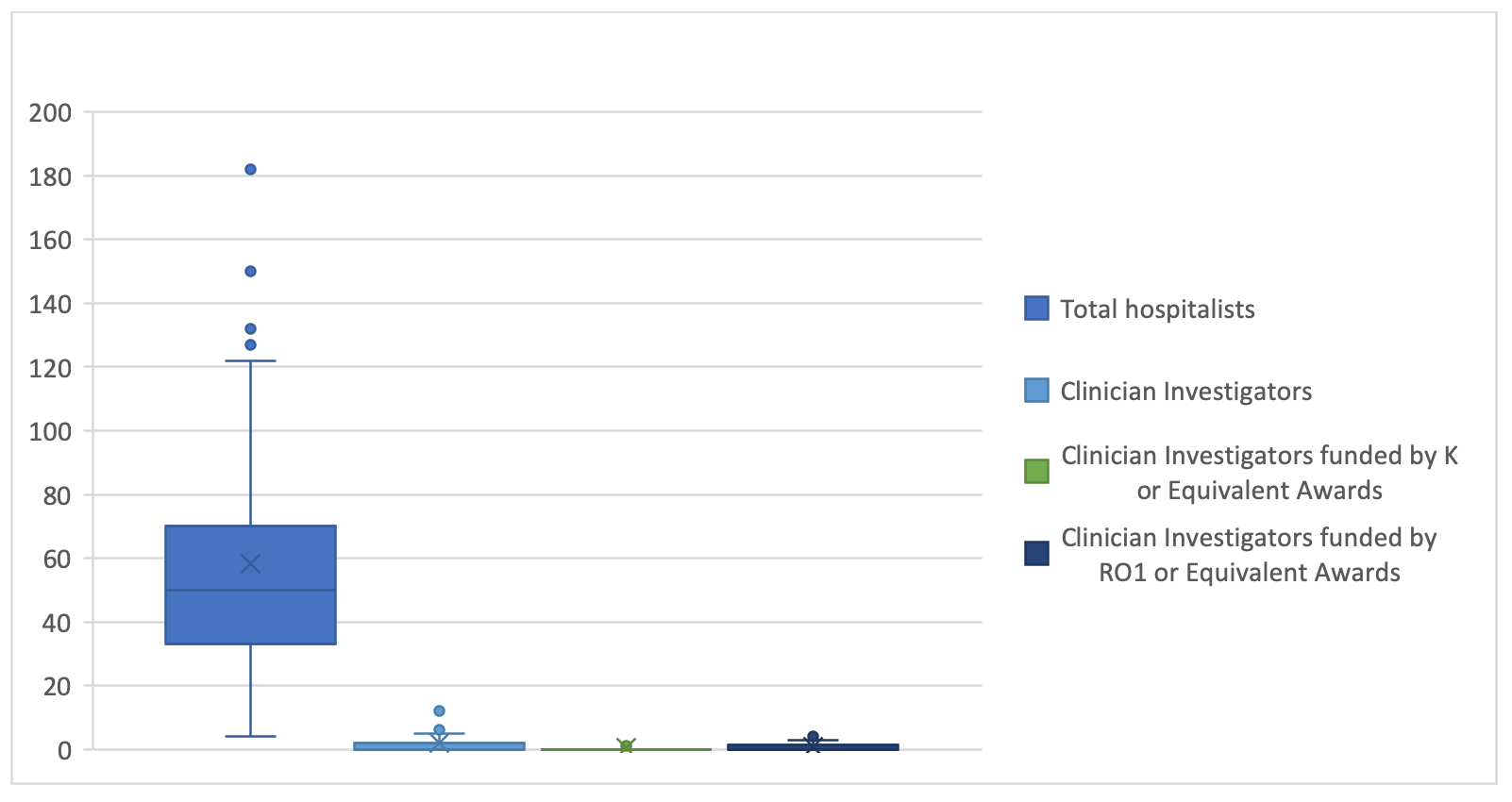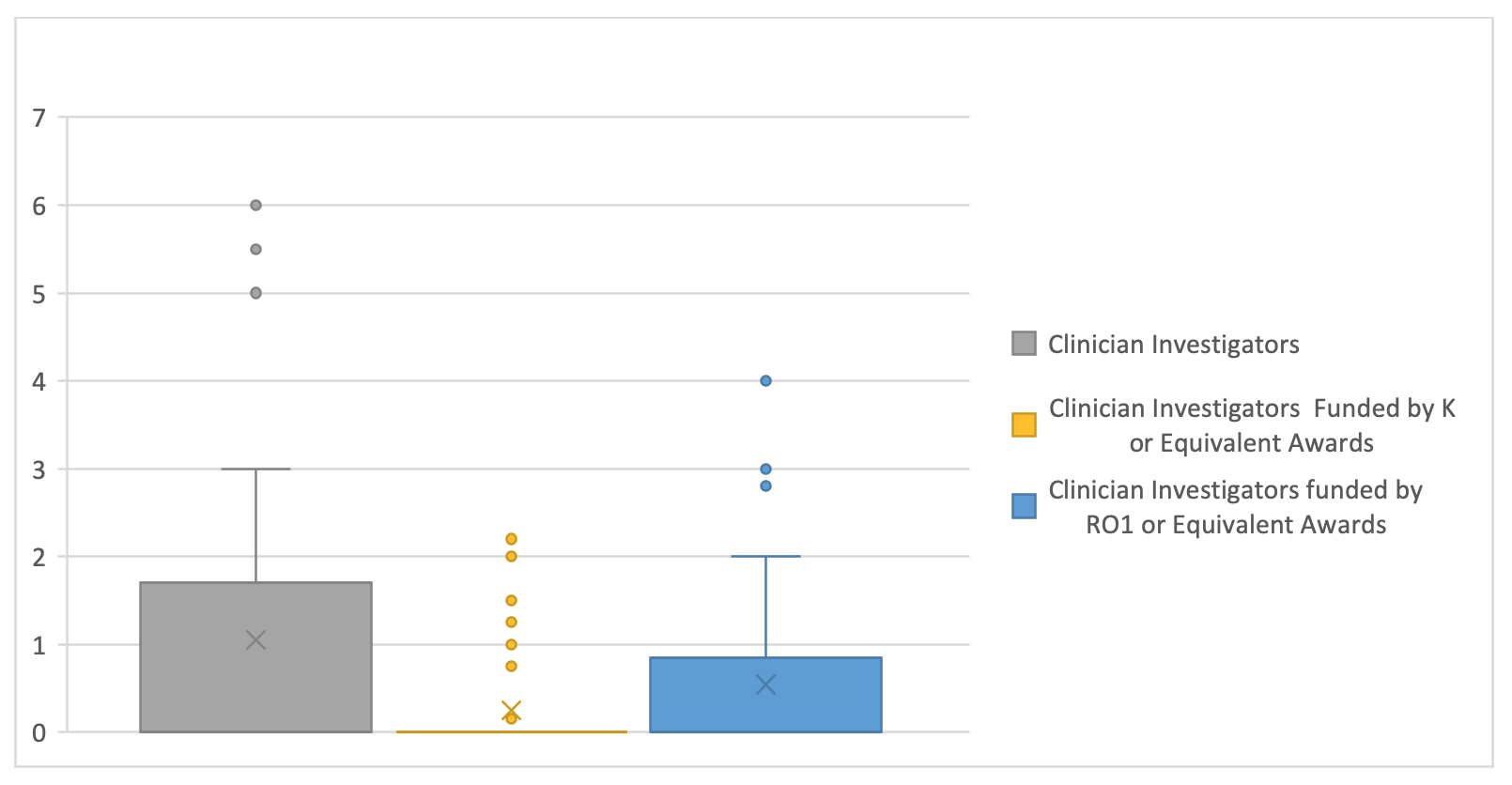Background: Hospital medicine is the fastest growing subspecialty within internal medicine, growing from 10,000 hospitalists in 2002 to over 50,000 in 2016. Despite this growth, there remain relatively few hospitalists who are clinician investigators. We sought to quantify the number of clinician investigators, their dedicated time for research at major United States academic medical centers, and identify potential gaps in resources for researchers.
Methods: We performed a survey of hospital medicine programs at academic medical centers in the United States affiliated with the Hospital Medicine Reengineering Network (HOMERuN), a hospital medicine research collaborative. Questions regarding the number of hospitalists and full-time equivalents (FTE) were free response. Questions regarding research services available, mentorship and services needing improvement were multiple choice. Surveys were distributed via email to chiefs and/or senior leaders of unique hospitalist groups between January and August 2019. Responses are reported as numbers and proportions or median and interquartile range (IQR) as appropriate.
Results: We received responses from representatives of 43 hospital medicine groups from 86 invitees (50%). The number of hospitalists per program ranged from 4 to 150 with a median of 50 (Figure 1). The median number of total clinical investigators per hospital medicine group was 0 (IQR 0-2) (Figure 1). Similarly, the median protected FTE (including grant support and dedicated salary support) for all clinician investigators within each program was 0 (IQR 0-1.6) (Figure 2). Most groups reported having research services available, but these were most often shared with another department/division; some programs reported not have access to statisticians (22%), statistical programmers (31.7%), or research assistants (56.1%). Most clinician investigators primarily reported mentorship from faculty within their hospitalist group (53.5%), but large proportions obtained mentorship from generalists outside the group (27.9%) or from subspecialists (34.9%). The following were identified as needing improved support for junior researchers: mentoring “at a distance” (53.5%), networking with other researchers (60.5%), access to administrative and clinical data from multiple sites (62.8%), consultation around developing researchers in hospital medicine (60.5%), and fellowships (53.7%).
Conclusions: Across many major U.S. academic medical centers, there is a dearth of hospitalist clinician investigators. In some cases, there are limited research resources available. This likely contributes to a large percentage of clinician investigators seeking mentors outside of hospital medicine. Our results show that more must be done to recruit and develop hospitalist clinician investigators. Sharing of data across sites for collaborative research, distance mentoring, and development of fellowship programs could be potentially high-yield ways to achieve this. Further research is needed to understand why there are relatively low numbers of hospitalist clinician investigators compared to ambulatory general internal medicine investigators.


